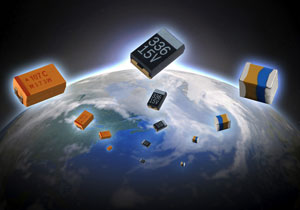Magnet Materials, Their Composition, Applications and Technical Capabilities
Permanent, soft and electro-magnets are a vital part of everyday life. They are found in or used to produce almost every modern convenience today. Magnet channels and products continue to advance with the changing needs of the marketplace. Through the years, customer requirements have become more advanced, from the magnet distribution needs of the early 1950s to the custom permanent magnet machining required for today’s applications.

There are a number of major families of permanent magnets available for designers, ranging from ferrite, known for its low cost and low energy, to rare earth materials, which are more expensive and offer higher performance. Designers need to analyze magnetizing field strength and magnetic output of magnetic materials prior to deciding on the appropriate magnet. As seen in Figure 1, magnetizing intensity for each material is shown verses that material’s magnetic flux density. Figure 2 is a general overview of select magnet materials addressing technical and application requirements.

Magnet Materials and Their Applications
Alnico – As one of the first magnet materials, Alnico was developed in the early 1930s. During World War II it was used in military electronic applications and after the war it quickly spread into civilian versions of applications and replaced magnet steel in many applications. High induction levels with good resistance to demagnetization and stability, due to its low temperature coefficient (0.02 percent /°C), at a reasonable cost made Alnico the material of choice.
Alnico magnet material is made by alloying aluminum, nickel and cobalt with iron. Some grades also contain copper and/or titanium. The alloying process used is casting or sintering. The process and the heat treatment needed to optimize magnetic properties produces hard (Rc45) and brittle parts that are best shaped or finished by abrasive grinding. Cast parts are generally under 70 pounds and may be used as-is, but polar surfaces are usually ground flat and parallel. Sintering is confined to high volume parts in sizes under one cubic inch and an effective press length to diameter ratio under four.
A high working temperature limit (550°C/1,020°F) makes Alnico well-suited for sensitive automotive and aircraft sensor applications. Alnico is produced in many grades to fit the requirements of these applications, from Alnico 1 to Alnico 12, but the most popular grades are 2, 5 and 8. By comparison to newer materials, the coercivity of Alnico is low.
Where Alnico is appropriate, magnet size can be minimized if it can be magnetized after assembly into the magnetic circuit. If used independent of other circuit components, as in security applications, the form factor (related to the permeance coefficient) must be great enough to cause the magnet to work above the knee in its second quadrant demagnetization curve. For critical applications, Alnico magnets may be calibrated to an established reference flux density value. A by-product of low coercivity is sensitivity to demagnetizing effects due to external magnetic fields, shock and application temperatures. For critical applications, Alnico magnets can be temperature stabilized to minimize these effects
Ceramic (Hard Ferrite) – Ferrite magnets, sometimes referred to as ceramic because of their production process, are the least expensive class of permanent magnet materials. The material became commercially available in the mid 1950s and has since found its way into countless applications including arc shaped magnets for motors, magnetic chucks and magnetic tools.
The raw material, iron oxide, for these magnets is mixed with either strontium or barium and milled down to a fine powdered form. The powder is then mixed with a ceramic binder and magnets are produced through a compression or extrusion molding technique that is followed by a sintering process. The nature of the manufacturing process results in a product that frequently contains imperfections such as cracks, porosity, chips, etc. Fortunately, these imperfections rarely interfere with a magnet’s performance.
To enhance a ceramic magnet’s performance, the ferrite compound may be biased by a magnetic field during the pressing process. This biasing induces a preferred direction of magnetization within the magnet, significantly reducing its performance in any other orientation. Consequently, ceramic magnets are available in both oriented (anisotropic) and non-oriented (isotropic) grades. Because of its lower magnetic properties, the isotropic grade of ferrite, ceramic 1, is typically utilized where complex magnetization patterns are required, and in process biasing would be cost prohibitive.
Ceramic magnets are inherently brittle, and it is highly recommended that they not be utilized as structural elements in any application. Their thermal stability is the poorest of all the magnetic families, but they may be utilized in environments up to 300°C (570°F). The dimensional repeatability of pressed components is difficult to control and, consequently, components requiring tight tolerances necessitate secondary grinding operations to assure conformity.
Samarium Cobalt – As the first commercially viable rare earth permanent magnet material, Samarium Cobalt (Sm-Co) is considered to still be the premium material for many high performance applications. Formulated in the 1970s, it came as a revolutionary product, initially tripling the energy product of other materials available at the time.
Sm-Co materials come in energy products from 16 MGOe up to 33 MGOe. Their high resistance to demagnetizing influences and excellent thermal stability has ensured Sm-Co as the premium choice for the most demanding motor applications. In addition, the corrosion resistance is significantly higher than, for example, Neodymium Iron Boron. (It is still recommended to coat the magnet in acidic conditions, however). Its corrosion resistance has also offered a high degree of comfort to those looking to use magnets in medical applications.
On a ‘per pound’ basis, Sm-Co is the most expensive permanent magnet material. However, because of its high energy product, it has achieved considerable commercial success by decreasing the required volume of magnet material to fulfill a certain task. Sm-Co can typically be used up to 300°C, though, of course, its actual performance at that temperature is governed strongly by the design of the magnetic circuit.
Neodymium Iron Boron – Sintered neodymium-iron-boron (Nd-Fe-B) magnets are licensed rare earth magnets, which are the most powerful commercialized permanent magnets available today, with maximum energy product ranging from 26 MGOe to 52 MGOe. Neodymium Iron Boron was developed in the 1980s. It has a combination of very high remanence and coercivity and comes in a wide range of grades, sizes and shapes. With its excellent magnetic characteristics Nd-Fe-B offers flexibility for new designs or as a replacement for traditional magnet materials such as ceramic, Alnico and Sm-Co for achieving higher efficiency and more compact devices.
Although sintered Neodymium is mechanically stronger than Samarium Cobalt magnets and less brittle than other magnets, it should not be used as a structural component. Selection of Nd-Fe-B is limited by temperature due to its irreversible loss and moderately high reversible temperature coefficient of Remenance (Br) and Intrinsic Coercivity ( Hci). Although exceptions exist, the maximum recommended application temperature is roughly 200°C for high coercivity grades. Nd-Fe-B magnets are more prone to oxidation than any other magnet alloys so coating is recommended if Nd-Fe-B magnet is to be exposed to humidity or chemically aggressive media such as acids, alkaline solutions salts and harmful gases.
Further detailed technical specifications for the different magnet materials and their grades can be found here.
About Dexter Magnetic Technologies
Since 1951, Dexter Magnetic Technologies has been delivering reliable magnet solutions for customer application requirements: supplying the world with permanent magnets, complex magnetic assemblies, magnetic cores and magnet accessories. As the original architect of magnetic technology, the company takes pride in being the essential magnet partner and a single source for magnetic solutions – realized and optimized.



